Reporting a bug to Wemaxa is a simple, structured process designed to save time and ensure fast resolution. We provide clear channels for submitting issues, whether through a dedicated support portal, email, or your assigned project dashboard. Each submission prompts a response from our team, confirming receipt and setting expectations for when the issue will be addressed.
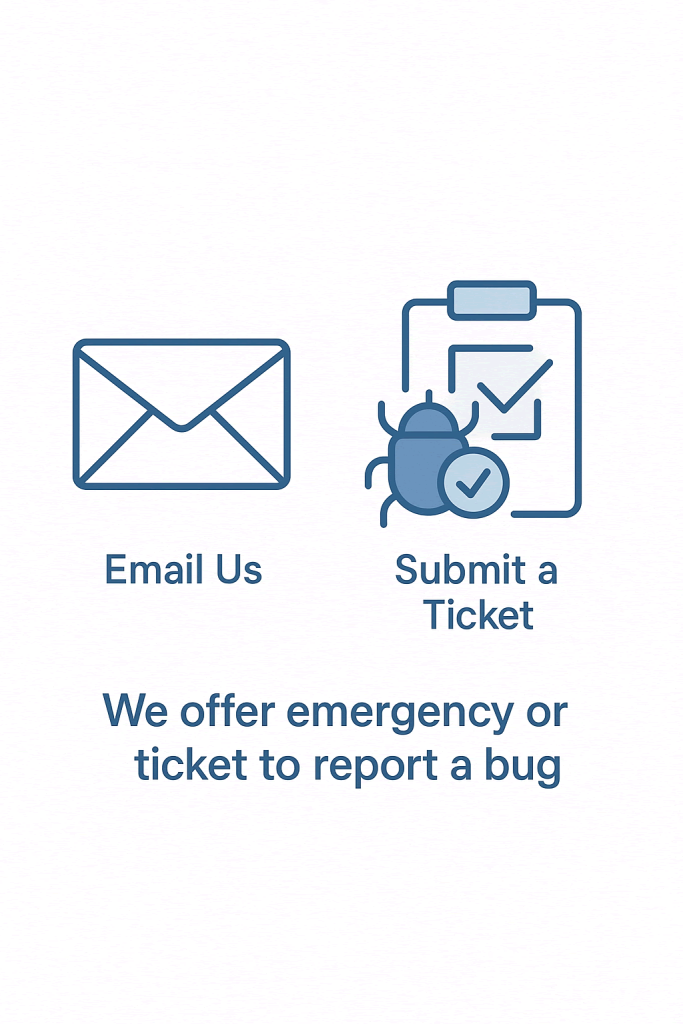
To help us resolve bugs quickly and accurately, we guide clients through a straightforward reporting format. You’ll be asked to describe the problem, provide the page or feature affected, and include any screenshots or steps to reproduce the issue. This clarity helps our developers pinpoint the cause without delay and start working on a fix right away.
📌 Need to Track Multiple Bugs?
If you’re working on a long-term or enterprise project, we can provide a shared bug tracker (e.g., Trello, Notion, GitHub Issues) to manage everything transparently.
Once a bug is logged, it is prioritized based on severity and impact. Critical issues such as broken functionality or security concerns are handled immediately. Minor visual or usability issues are typically scheduled into the next update cycle. We keep you informed throughout the process, from acknowledgment to resolution, so you’re never left in the dark.
🐞 How to Report a Bug to Wemaxa
✅ 1. Preferred Channels
You can report bugs through any of the following:
- Email (e.g., support@wemaxa.com or your assigned project email)
- Support chat (Telegram, WhatsApp, or Slack if part of your plan)
- Client dashboard (if a project portal is provided)
- Maintenance request form (for clients on a support plan)
✅ 2. What to Include in Your Report
To help us resolve the issue fast, please include:
| Required Info | Description |
|---|---|
| 🔗 URL | Exact page or feature where the issue occurs |
| 📝 Description | What happened, what you expected to happen |
| 🖼️ Screenshots/Videos | Visuals of the error, console logs, etc. (if possible) |
| 🧪 Steps to Reproduce | Step-by-step actions that lead to the bug |
| 🔧 Browser/Device Info | Example: Chrome 124 on Windows 10 or iPhone Safari |
✅ 3. Response Time
- Basic Support: Within 72 hours
- Pro Support: Within 48 hours
- Enterprise or Critical: Within 24 hours or less
✅ 4. What Happens Next
- You receive a confirmation.
- Our devs replicate and diagnose the bug.
- Fix is applied and tested.
- You get a final confirmation + optional preventive suggestion.
At Wemaxa, we see bug reporting as part of an ongoing partnership. Our goal is to keep your website or app running at its best, and that means making sure you can report issues easily, get fast answers, and see real results without unnecessary back-and-forth.
MORE LINKS:
Maintenance services
Support packages
If something breaks
Monthly fee
Site migration
Backups
If site is hacked
New features
Support channels
HOW DO I REPORT WEBSITE BUGS?
At Wemaxa, we recognize that encountering bugs or unexpected errors in your website or application can be frustrating, time-consuming, and potentially disruptive to your business operations. We also understand that timely and accurate reporting is essential for a fast resolution, preventing further issues, and maintaining the integrity of your digital platform. That is why we have developed a detailed and structured bug reporting process designed to make it as easy as possible for clients to provide the information our development team needs to identify, diagnose, and resolve problems efficiently while minimizing downtime and impact on your users.
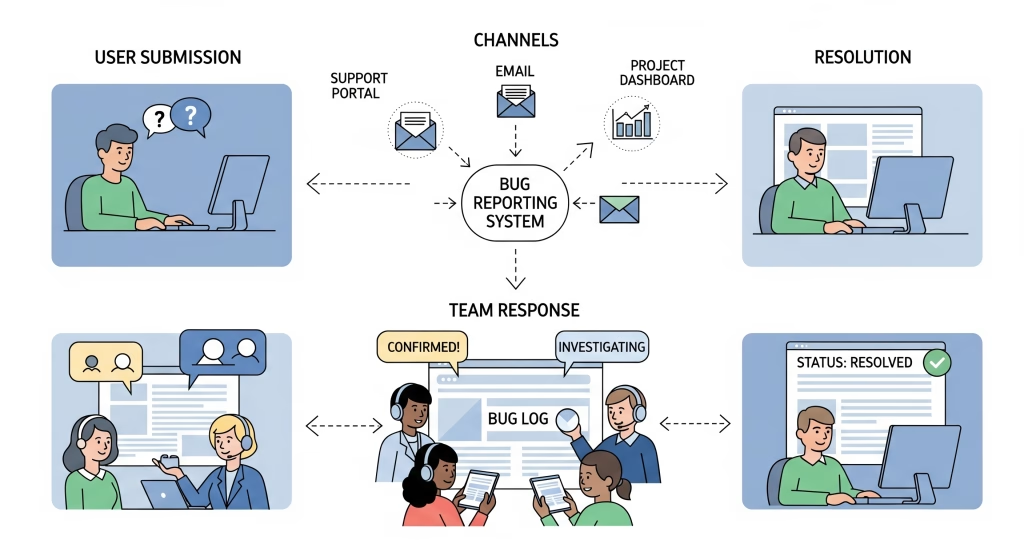
To report a bug effectively, Wemaxa encourages clients to use the most appropriate communication channels depending on the urgency and scope of the issue. Preferred methods include emailing our dedicated support team at support@wemaxa.com or the project-specific email assigned to your account, using direct messaging on platforms such as Slack, Telegram, or WhatsApp if these were configured for your project, submitting reports via a client portal dashboard, or using the online maintenance request form provided for active support plans. Utilizing these channels ensures that your report reaches the right personnel promptly, allowing us to respond faster and reduce the risk of miscommunication or delays.
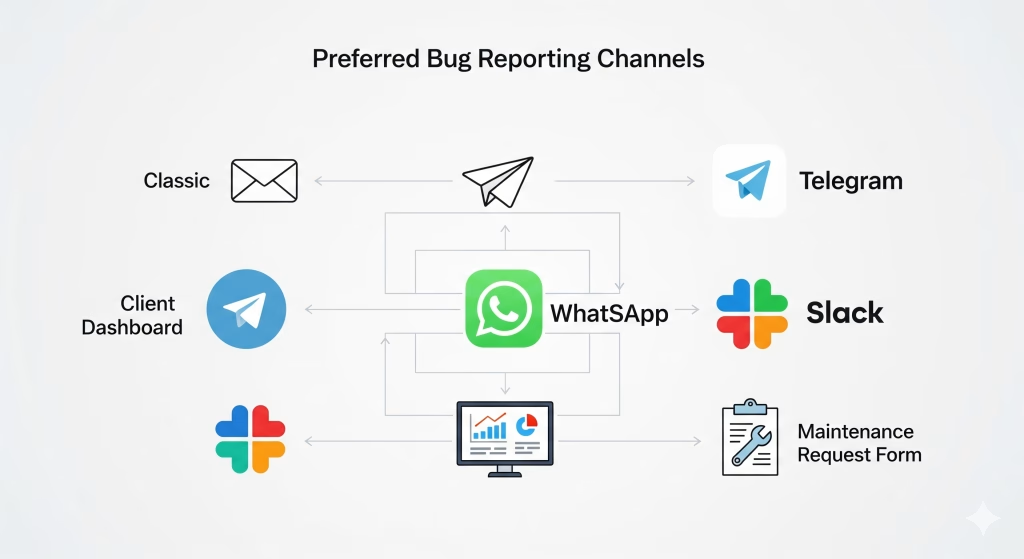
When submitting a bug report, it is crucial to provide comprehensive details that allow our developers to replicate and understand the issue quickly. Recommended information includes the exact URL or page where the problem occurs, a clear description of the behavior observed versus the expected behavior, screenshots or screen recordings that capture the error or unexpected behavior, step-by-step instructions on how to reproduce the bug, and technical details such as browser type, version, operating system, and device used during testing. Including these elements significantly reduces the back-and-forth clarification process, allowing our team to focus directly on resolution. For more guidance on documenting and reporting bugs professionally, consult resources like TechSmith’s Guide to Bug Reporting and TestRail’s Tips for Effective Bug Reports.
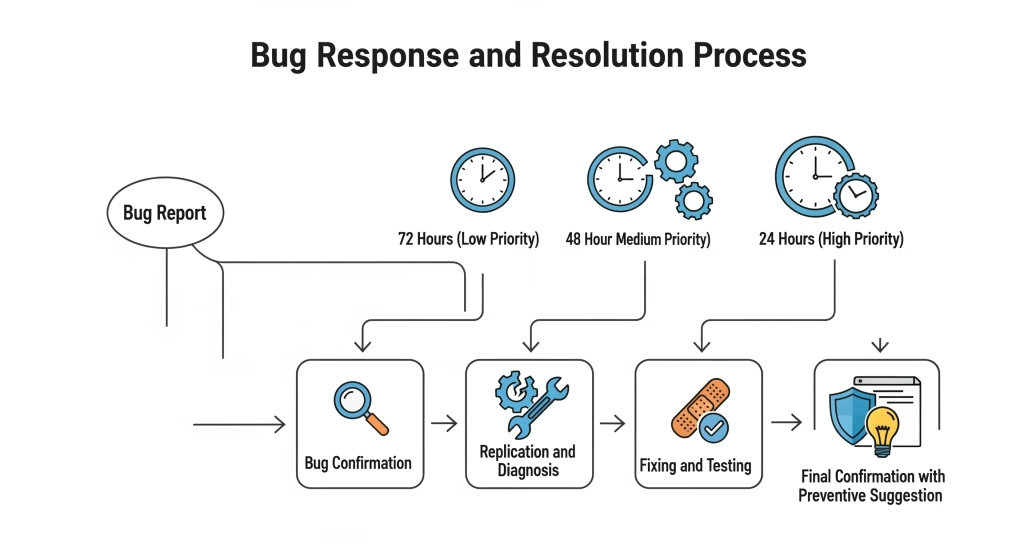
After receiving your bug report, Wemaxa follows a systematic response protocol designed to prioritize issues based on severity and potential impact. For minor bugs, initial acknowledgment is typically provided within 72 hours, while moderate issues may be addressed within 48 hours, and critical or enterprise-level problems are escalated for immediate attention, often within 24 hours. This triage process ensures that high-priority problems affecting security, user experience, or business continuity are addressed first, while less critical items are scheduled for resolution in the next development cycle. This structured prioritization maintains operational stability and ensures that resources are allocated effectively.
The bug resolution process at Wemaxa is comprehensive and transparent. Once a report is logged, we confirm receipt and communicate expected timelines for diagnosis and resolution. Our developers then attempt to replicate the bug in a controlled environment, identify the root cause, and implement a solution. Following this, extensive testing is performed to ensure the fix resolves the issue without introducing new problems. After resolution, clients receive final confirmation, along with detailed explanations of the cause, actions taken, and, where appropriate, preventive measures or best practices to avoid similar issues in the future. This continuous feedback loop not only resolves the immediate problem but also strengthens the overall stability and reliability of your platform.
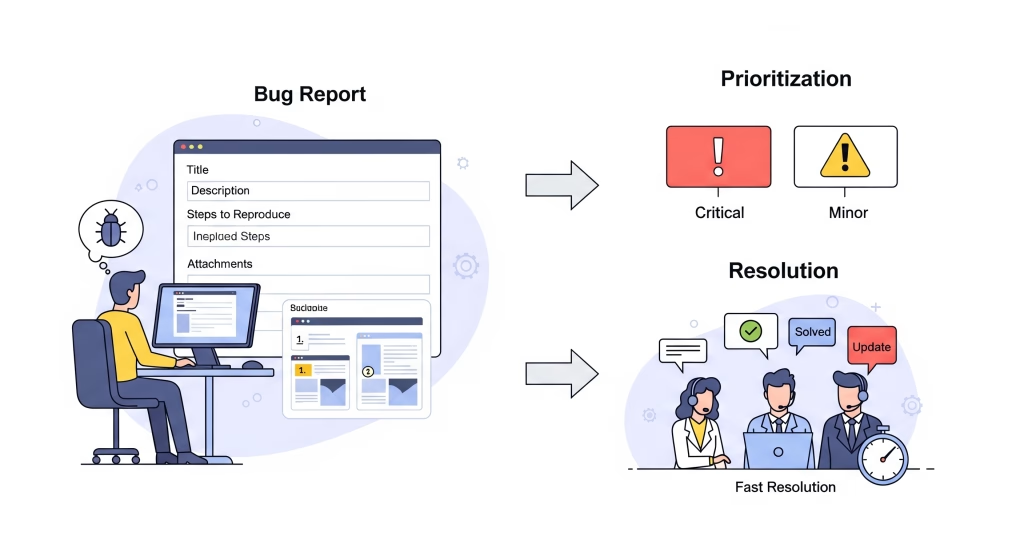
At Wemaxa, we view effective bug reporting as an essential part of our ongoing partnership with clients. By following these reporting guidelines, you help us maintain high-quality digital experiences while enabling faster response times and more accurate fixes. We also provide proactive advice and resources to help clients anticipate potential issues and report them efficiently. For additional insights on professional bug reporting practices, workflow optimization, and documentation strategies, refer to Atlassian’s Bug Reporting Best Practices and Smartsheet’s Guide on Writing Effective Bug Reports. By integrating these practices, Wemaxa ensures that bugs are resolved quickly, accurately, and with minimal disruption to your business operations.


